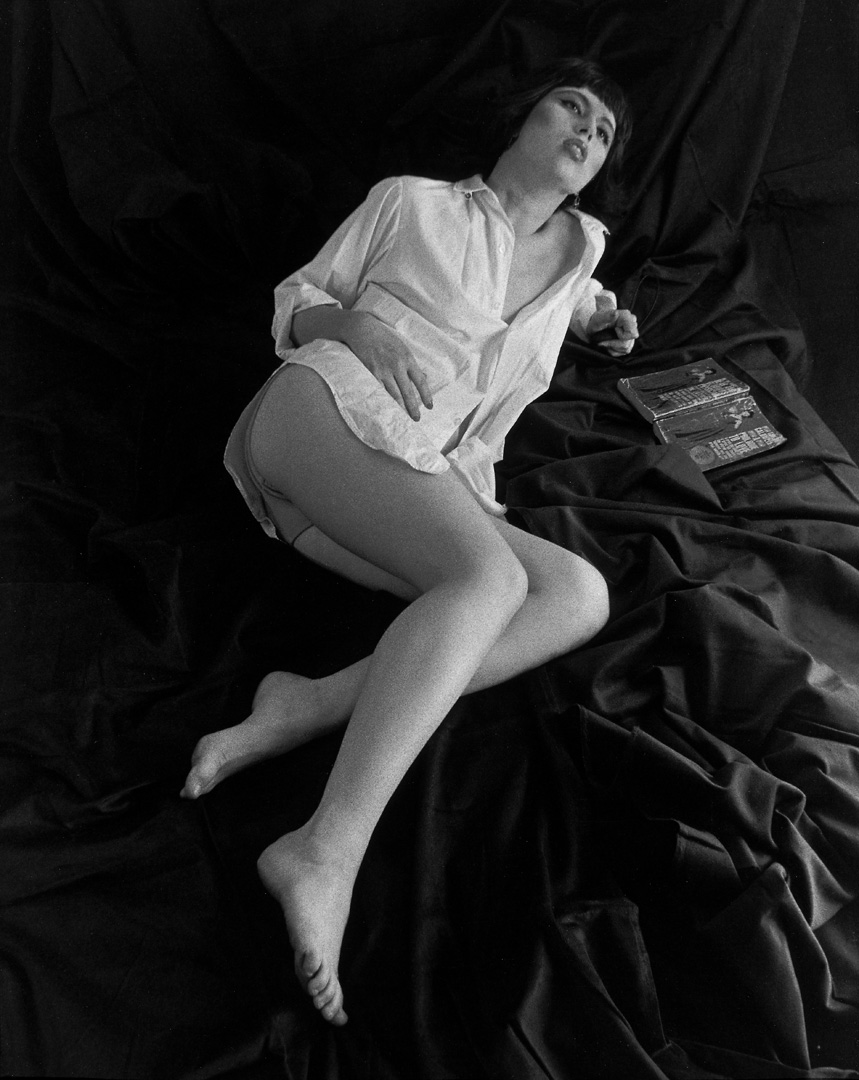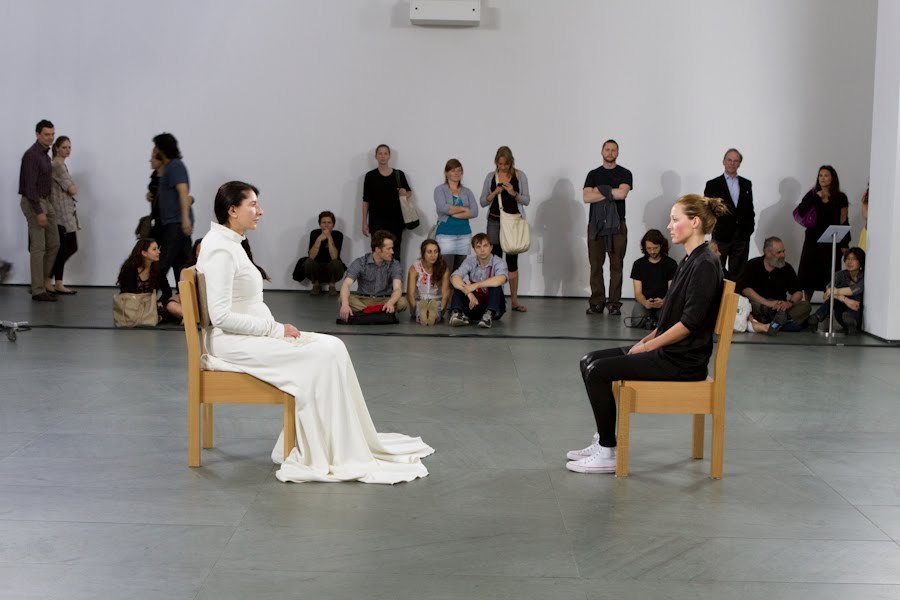Ayushi Kadakia
Professor Cacoilo
Post #4
Due: 4/18/2017
Five Women Artists
Can you name five women artists? Many people are often unable to name five women artists because women have received no recognition in the art world - which was focused on the success achieved by men. Regardless of the women’s rights, and other movements, women in art have been given little to no credit in terms of their various styles and ingenious compositions. Art history undermines women’s achievements beginning from the 18th century to present day. However, many women have had to show their prowess by using their female sexuality to counter the male gaze visible in consumerism, and the non-recognition of female artists. In nature, female sexuality has been used as a weapon to fight against the inequality constantly visible in society. Women artists have revolutionized the way art is presented through various different mediums, including, photography, performance arts, and master pieces that address the political and racial aspects of the country.
Judy Chicago
Judy Chicago “was one of the pioneers of feminist art in the 1970s, a movement that endeavored to reflect women's lives, call attention to women's roles as artists, and alter the conditions under which contemporary art was produced and received,”(Art History Website). Judy Chicago is monumentally famous for “Dinner Party,” an astounding piece of art that is located in the Brooklyn Museum. Chicago’s “Dinner Party” celebrates the achievements of women artists that have had an enormous impact in the art world. It’s a sculpture in the shape of a triangle that highlights some of the most important women that revolutionized the art world. In the sculpture, for instance, resides Artemisia Gentileschi, a profound artist from the 1800s that defied the rules set forward by the art world and created masterpieces that empowered women. Similarly, this piece in particular took hundreds of women with their skills in embroidery and decoration highlighting female sexuality and fertility.
 |
| Judy Chicago, Dinner Party, 1974-79 |
Cindy Sherman
Cindy Sherman defied the rules surrounding women through her photography that contrasted the male gaze that was visible in all the male artwork. Through photography, Sherman exposed some of the gender stereotypical roles of women that were expected with the unequal status. Sherman composed a collection of photos or rather, self-portraits that challenged the male gaze. For instance, the “Untitled Film Still #34” is of herself laying down gazing upwards reading a magazine. In this photo, Sherman comments on the promiscuity of women as subjected by men. She’s wearing an oversized button down, while wearing make-up and reading a magazine - a comment on consumerism. Sherman comments on the sexualization of women to help corporations sell - especially through using sex as an outlet. Overall, her entire composition is full of photos where she defies the ideals of consumerism.
 |
| Cindy Sherman, Untitled Still #34, 1979 |
Adrian Piper
Adrian Piper is a revolutionary artist that challenged ideas that surrounded the political aspects of her identity: a black woman artist. She worked towards countering ideas of racism, especially in a primarily white society. She was often confused for being a white woman because she was so light-skinned. In such social situations, other white men and women would openly make racist remarks assuming she was also white. However, this form of racism left her to create an astounding film that targeted the audience named “Cornered,” in 1988. “Cornered” was Piper’s way of putting forth the idea that we are all one. Interestingly, the performance piece is placed in a white room with chairs in the center facing the tv where she reminds each person that all of us are connected. Each white person has an ancestor that could’ve been black. There’s only a few people in the world without the heritage or history tracing back to black ancestors. All in all, the point of the performance piece is: we are all connected, and in fact, people without the black heritage are the minority.
 |
| Adrian Piper, Cornered, 1988 |
Barbara Kruger
Barbara Kruger, an American artist, with a skill-set that reminds the world about the power of women. Kruger established a style that takes highly commercialized magazines and crafting art that spoke towards empowering women. In one of her art pieces, untilted with the words “The War for Me to Become You” made in 2008 fought to show the struggles that women have faced for centuries. The art piece is presented with a flame that is directly underneath the words with a match that reads “Don’t turn me inside out.” She puts forward the immense pressure women face to become someone of equal status has been a concept so foreign to men. Constantly, women are faced with a challenge to prove themselves equal. Kruger is an ingenious artists that uses female sexuality to reveal the constant fight to prove we are equal.
.jpg) |
| Barbara Kruger, The War for me to Become You, 2008 |
Marina Abromovic
Marina Abromovic is a “Yugoslavia-born performance artist. Her work explores the relationship between performer and audience, the limits of the body, and the possibilities of the mind,”(Wikipedia). Her performance art has baffled hundreds of people astonished by her commitment to art. Her most important work “The Artist is Present” took place in 2010 in MoMa, in New York. It was a performance piece carefully crafted to direct interaction with the audience. Dozens of people lined up to meet this incredible artist where the “set” was simply a white room, with two chairs: one with her, and the other for the spectator. All she does is sit in her chair and stare at the spectator, who makes direct eye contact. The concept is absolutely revolutionary. In our generation, where communication is hindered by technology and limited human interaction, this artwork is emotional for many of the spectators. They are simply enjoying her company, and vice versa. In a documentary that we watched in class, there were spectators that were crying because of the moving performance. Abromovic sat there gazing at her spectator in absolute silence. The conclusion: it was breathtaking.
 |
| Marina Abromovic, The Artist is Present, 2010 |
Regardless of the non-recognition of women artists throughout history, today’s society continues to fight for equality. These women that are brave and brilliant inspire all of us to become fearless and express ourselves openly. In conclusion, women artists have fought for equality for centuries, now, it’s our turn to continue the movement.
Works Cited
"Judy Chicago Biography, Art, and Analysis of Works." The Art Story. N.p., n.d. Web. 17 Apr. 2017.
"Marina Abramović." Wikipedia. Wikimedia Foundation, 14 Apr. 2017. Web. 17 Apr. 2017.
No comments:
Post a Comment